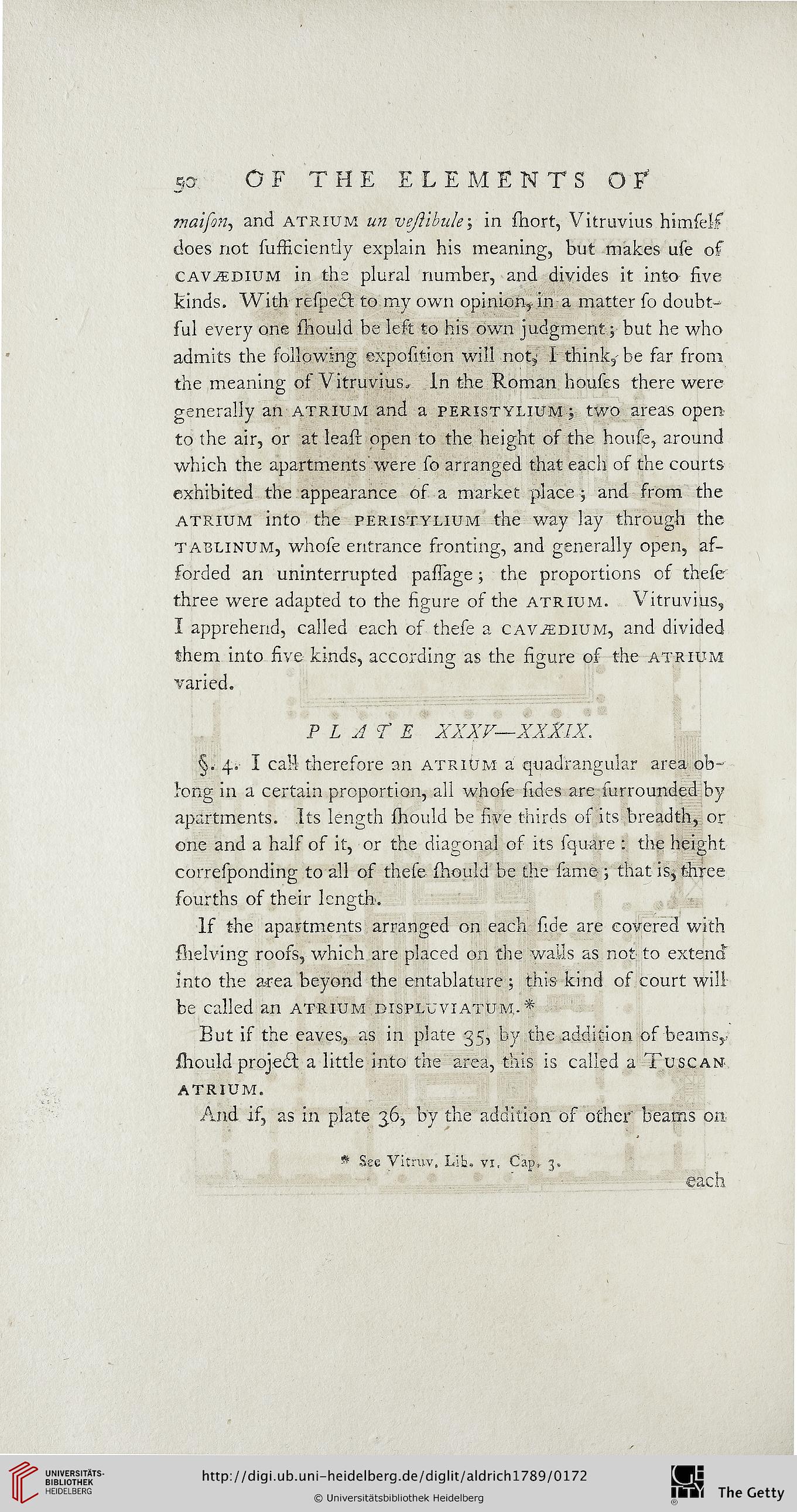OF THE ELEMENTS OF
53,
maifon, and atrium un vejlibule; in snort, Vitruvius hirnsel.si
does not sufficiently explain his meaning, but makes use of
cavaidiuM in the plural number, and divides it into five
kinds. With respedfc to my own opinion, in a matter so doubt-
ful every one ssiould be left to his own judgment; but he who
admits the sollowing exposition will not, I think, be far from
the meaning of Vitruvius, In the Roman liouses there were
generally an atrium and a peristylium ; two areas open-
to the air, or at least open to the height of the house, around
which the apartments were so arranged that each os the courts
exhibited the appearance os a market place ; and from the
atrium into the peristylium the way lay through the
tablinum, whose entrance fronting, and generally open, af-
forded an uninterrupted passage 5 the proportions of these
three were adapted to the figure os the atrium. Vitruvius,
I apprehend, called each of these a cavasdium, and divided
them into five kinds, according as the figure of the atrium
varied.
PLATE XXXV—.XXXIX.
§. 4. I cals therefore an atriUm a quadrangular area ob-
long in a certain proportion, all whose iides are surrounded by
apartments. Its length fliould be five thirds os its breadth, or
one and a hals of it, or the diagonal of its squ-are : the height
correfponding to all of these should be the same-; that is, three
sourths of their length.
Is the apartments arranged on each side are covered with
{helving rooss, which are placed on the walls as not to extend
into the area beyond the entablature ; this kind of court will
be called an atrium displuvxatum,.*
But if the eaves, as in plate 35, by the addition of beams,,
sliould project a little into the area, this is called a Tuscan
atrium.
And if, as in plate 36, by the addition os other beams on
* See Vitruv. Lib, vi, Cap, 3,
each
53,
maifon, and atrium un vejlibule; in snort, Vitruvius hirnsel.si
does not sufficiently explain his meaning, but makes use of
cavaidiuM in the plural number, and divides it into five
kinds. With respedfc to my own opinion, in a matter so doubt-
ful every one ssiould be left to his own judgment; but he who
admits the sollowing exposition will not, I think, be far from
the meaning of Vitruvius, In the Roman liouses there were
generally an atrium and a peristylium ; two areas open-
to the air, or at least open to the height of the house, around
which the apartments were so arranged that each os the courts
exhibited the appearance os a market place ; and from the
atrium into the peristylium the way lay through the
tablinum, whose entrance fronting, and generally open, af-
forded an uninterrupted passage 5 the proportions of these
three were adapted to the figure os the atrium. Vitruvius,
I apprehend, called each of these a cavasdium, and divided
them into five kinds, according as the figure of the atrium
varied.
PLATE XXXV—.XXXIX.
§. 4. I cals therefore an atriUm a quadrangular area ob-
long in a certain proportion, all whose iides are surrounded by
apartments. Its length fliould be five thirds os its breadth, or
one and a hals of it, or the diagonal of its squ-are : the height
correfponding to all of these should be the same-; that is, three
sourths of their length.
Is the apartments arranged on each side are covered with
{helving rooss, which are placed on the walls as not to extend
into the area beyond the entablature ; this kind of court will
be called an atrium displuvxatum,.*
But if the eaves, as in plate 35, by the addition of beams,,
sliould project a little into the area, this is called a Tuscan
atrium.
And if, as in plate 36, by the addition os other beams on
* See Vitruv. Lib, vi, Cap, 3,
each





